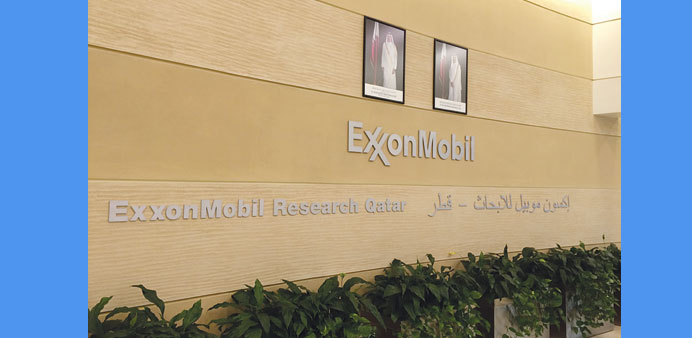A view of the ExxonMobil Research Qatar (EMRQ) at the Qatar Science and Technology Park (QSTP). Inaugurated in 2009, EMRQ is one of QSTP’s first anchor tenants.
ExxonMobil Research Qatar (EMRQ)’s contribution to Qatar’s scientific research was quite substantial and achieved with the support of local partners, such as Qatar Petroleum and our joint ventures, the Ministry of Environment, and Qatar University, said Alistair Routledge, president and general manager, ExxonMobil Qatar.
“This collaboration has enabled us to so rapidly and effectively advance technologies to support Qatar’s sustainable development and environmental protection efforts — as well as its thriving LNG industry,” Routledge said. He was speaking in the context of the fifth anniversary of the establishment of ExxonMobil Qatar’s research centre, ExxonMobil Research Qatar (EMRQ), this year.
Speaking of the significance of EMRQ’s milestones, achievements and partnerships, Routledge said, “We are very proud of what EMRQ has managed to achieve over the past five years, and how these efforts embrace the objectives of the Qatar National Vision 2030.”
Inaugurated in 2009 at the Qatar Science and Technology Park (QSTP), which has earned international acclaim as a hub for scientific excellence, EMRQ is one of QSTP’s first anchor tenants.
Later this week, ExxonMobil Qatar will mark the event with a special celebration to be held under the patronage of Qatar Foundation Research and Development, which will gather more than 300 of its partners, key government officials and community leaders.
EMRQ exemplifies how ExxonMobil is contributing to the Qatar National Vision 2030 by supporting research, safety, health and the environment. Since inception, EMRQ has crossed many milestones.
In 2009, EMRQ launched its first project, focusing on the marine environment of the Qatari coastline. Also in the same year, EMRQ began a comprehensive, multiyear, QR7mn research programme to investigate the potential effects from the seawater used at Ras Laffan and returned to the Gulf Sea.
In 2010, Qatar University (QU) and EMRQ signed a MoU to further academic excellence through human capital investment, innovative technology and research and development. Moreover, the centre announced the extension of its commitment to QSTP with a total investment of more than QR218mn through 2014.
Year 2011 saw a partnership between EMRQ and Nakilat to develop a prototype 3D training simulator for the reliquefaction plant onboard the Q-Max LNG carrier ‘Mozah’ and it also partnered with RasGas to develop a 3D immersive training simulator for the RasGas AKG-II facility.
In 2012, EMRQ announced two new technology advancements developed to enhance safety and environmental performance associated with liquefied natural gas (LNG) production and transport: the Remote Gas Detection System, which allows for earlier identification of gas emissions, averting potential safety hazards and reducing emissions; and an advanced, immersive 3D visualisation environment simulates actual work scenarios, increasing training effectiveness and improving job safety.
In the same year, QU and EMRQ announced a twelve month, QR2.2mn study as part of the water reuse research programme to develop technologies that will utilise industrial water in ways that are beneficial to Qatar.
In 2013, EMRQ partnered with RasGas to pilot the single sensor version of the IntelliRed Remote Gas Detection technology at Ras Laffan — a first of its kind in the Middle East.
Also that year, EMRQ partnered with Qatar Petroleum Research and Technology Centre to test multi-user functionalities in 3D immersive environments.
In 2014, EMRQ’s achievements included a partnership with QU and Texas A&M at Galveston (TAMUG), with support from the Private Engineering Office and the Ministry of Environment, to further environmental research and marine mammal initiatives in order to address the issue of preservation of dugongs — large, long-living herbivorous marine mammals found in Qatar’s coastal waters. “ExxonMobil is committed to responsible and sustainable development, and the work we do at EMRQ supports this commitment,” said Dr Jennifer Dupont, Research Director of EMRQ.
“First and foremost, we aim to protect people and the environment through our actions and scientific research – and I am extremely pleased to head EMRQ as it contributes to programmes, which are targeted at protecting Qatar’s marine environment, increasing water supplies, keeping the air clean and understanding Qatar’s coastline, all with explicit attention to safety.”

